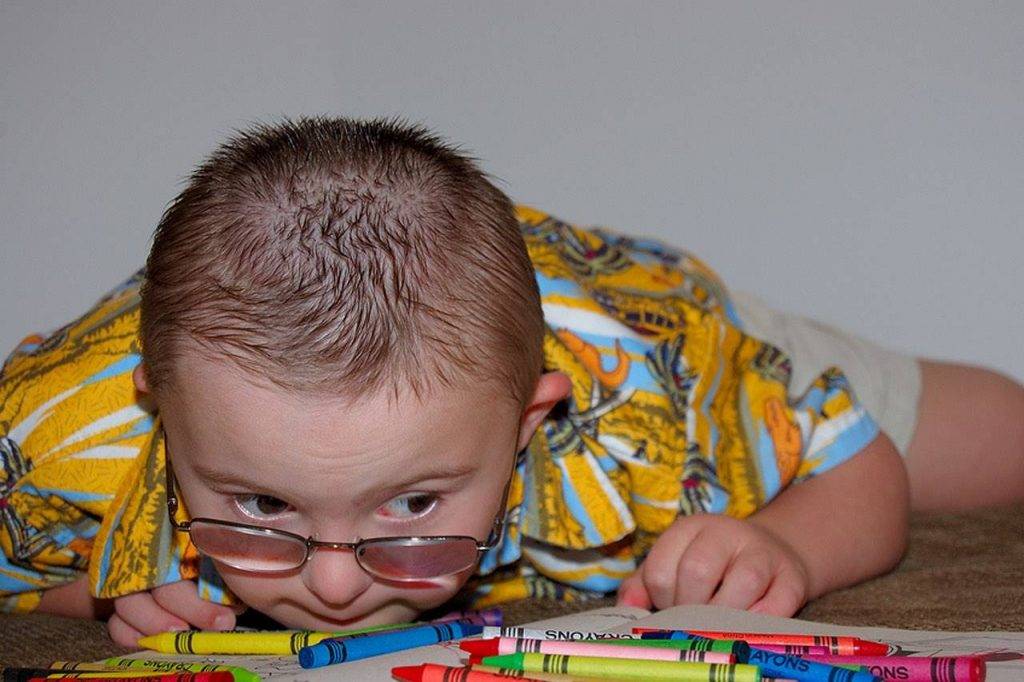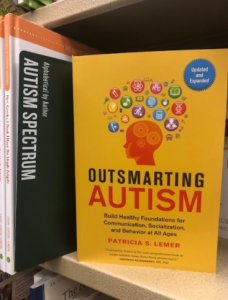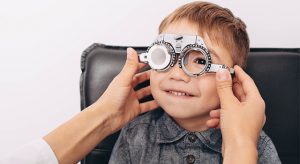Individuals with Down Syndrome (DS) are at a higher risk for a range of vision conditions that may affect the development of their visual skills.
Down syndrome (DS) is caused by a duplication of all, or part, of chromosome 21— making three copies of the chromosome rather than the usual two copies. The extra genetic material leads to certain physical changes in individuals with DS.
Down syndrome is one of the most common chromosomal abnormalities in children.
The frequency of DS is approximately 1 in every 800 births, with an increased frequency among older mothers.
With the specialized improvements in the quality of medical care and educational resources, individuals with DS can live a more productive, longer life.
How do vision problems affect children with DS?
According to the National Institute of Child Health and Human Development, more than 60 percent of children with DS have vision problems.
Furthermore, the optical prescriptions for children with DS are often in the higher range of far-sighted, near-sighted and astigmatism, often requiring them to use specialty lenses and frames.
Therefore, even with corrective eyeglasses for near or distant vision, the quality of their vision may be affected as a result of reduced visual skills.
When is an eye exam necessary?
Down syndrome affects the development of the eyes, which can impact the proper development of vision. According to research, ocular disease is prevalent in over 50 percent of patients with DS— from milder conditions such as tear duct abnormalities to severe diagnoses such as cataracts, that can cause significant vision loss.
Frequent comprehensive eye exams, beginning from 6 months of age, are essential for individuals with DS.
It is important to note that an eye exam can be challenging for both the child and the doctor, it is therefore recommended to choose an eye doctor skilled in evaluating children with developmental delays.
Common vision conditions that affect individuals with DS
Refractive errors – Children with DS are more likely to need glasses than other children as a result of myopia (near-sightedness), hyperopia (far-sightedness), and/or astigmatism. A refractive error may develop early in life or later on.
Strabismus and amblyopia – Between 20 and 60 percent of individuals with DS have amblyopia (lazy eye) or strabismus (crossed-eyes). Esotropia (inward eye turn) is most common, while exotropia (outward eye turn) occurs less frequently. Strabismus often goes unnoticed or it may be hidden by the folds of skin between the eyes and the nose.
It is important to diagnose strabismus as early as possible, as crossed eyes can result in amblyopia, loss of stereopsis (the use of the two eyes together), or loss of depth perception. Amblyopia and strabismus may be treated with eyeglasses or vision therapy (with or without patching), and/or eye muscle surgery (usually involving multiple procedures).
Keratoconus – Approximately 30 percent of individuals with DS suffer from this condition that causes thinning of the cornea (front layer of the eye) and blurred vision. Keratoconus is usually diagnosed around puberty and regular monitoring is essential.
Cataracts – There is an increased incidence of congenital cataracts (present at birth) as well as acquired cataracts among the DS population. Cataracts cause a clouding of the lens inside the eye. The condition may progress slowly and should therefore be monitored regularly for proper management.
If cataracts are present early in childhood, they will prevent a clear image from being delivered to the brain, and the brain may therefore never “learn” to see. This can cause a severe form of amblyopia known as deprivational amblyopia. Surgical treatment for cataracts is performed when necessary.
Glaucoma– There is an increased incidence of infantile glaucoma among the DS population. Glaucoma results from elevated pressure within the eye and can lead to a significant loss of vision. Appropriate treatment depends on the severity of the condition, and may include medication, laser treatments, or surgery.
Blepharitis – Inflammation of the eyelids with redness at the edge of the lids and crusting around the lashes may cause dryness or burning. Eyelid hygiene and topical antibiotics are typically used to treat this condition.
Tearing – Excessive tears or watering of the eyes may occur as a result of a blocked or narrow drainage channel (nasolacrimal duct obstruction). This may require surgery for treatment.
Nystagmus – An involuntary “back-and-forth” movement or shaking of the eyes that can affect vision clarity on a mild to a severe degree. While surgery may improve appearance, and botox injections are sometimes able to reduce the amount of visible movements, the outcomes are generally only temporary.
Signs of a vision problem
Unfortunately, children with DS often do not complain about their eye problems, either because they are unable to communicate that there is a problem, or because they simply don’t notice a problem.
It is therefore essential that parents and caregivers be on the lookout for the following signs that may indicate a vision problem:
- Blurry vision
- Sits close to the TV
- Reading difficulties
- Squinting
- Closing one eye
- Unusual head tilt
- Poor hand-eye coordination
- Light sensitivity
- Crossing or wandering of one or both eyes
- Ptosis (eyelid droop)
- Tearing or discharge (blocked tear duct)
If your child has experienced any of these symptoms contact an eye doctor near you.
SEE RELATED: Vision and Special Needs
Special eyeglasses designed for patients with DS
More than 50 percent of all individuals with DS have a refractive error, including high levels of hyperopia (farsightedness), myopia (nearsightedness), or astigmatism— requiring full time use of eyeglasses.
Typical eyeglasses are not usually appropriate for individuals with DS because of their unique facial features. However, a wide variety of optical frames have been designed specifically for individuals with DS— allowing the bridge of the frame to be adjusted appropriately on the nose, and the temples to be modified to keep the glasses from constantly slipping down.
Additionally, optical lenses for patients with DS often include transition, hi-index and bifocal designs.
Vision therapy for patients with DS
Vision therapy, with or without eyeglasses, is highly effective in treating amblyopia, strabismus, and other functional vision difficulties that are common among the DS population.
Each vision therapy program is personalized to the needs of the individual patient, and includes therapeutic activities to retrain the eye-brain connection and improve the visual skills necessary for clear binocular vision.
Vision therapy aims to enhance the following visual skills:
- Eye alignment
- Eye teaming
- Eye focusing
- Eye movements
- Visual processing
Enhancement of the visual skills can improve your child’s quality of life
Improvement of visual skills through a program of vision therapy will facilitate achievement of developmental milestones and significantly influence the development of important life skills for children with DS.
Wearing appropriate eyeglasses and participating in a program of vision therapy may enhance your child’s skills and significantly improve their overall quality of life.
LEARN MORE: Vision for Special Needs
Schedule an appointment with a vision therapy eye doctor to improve your child’s vision.









